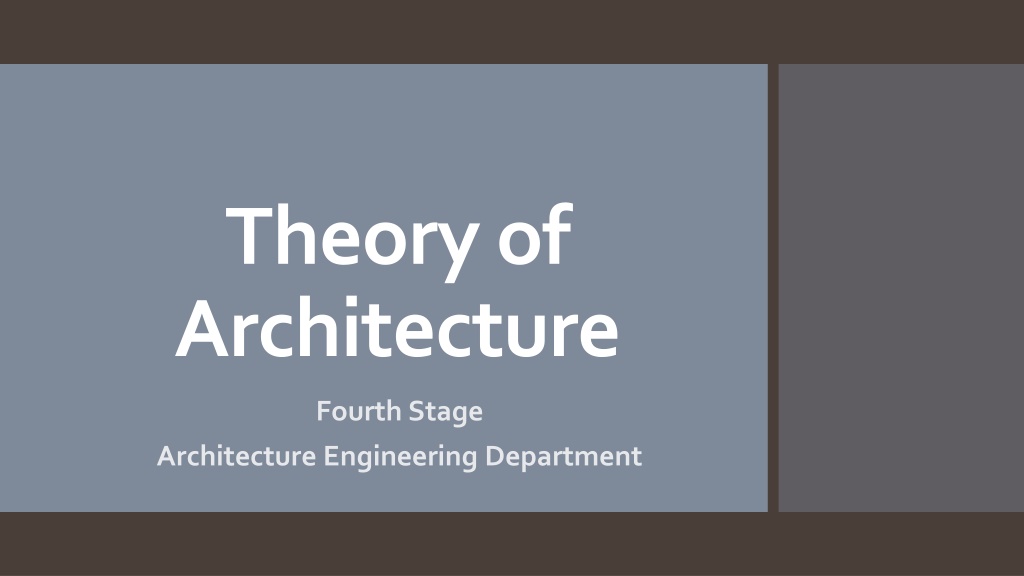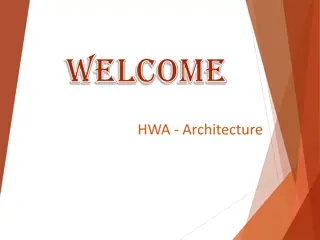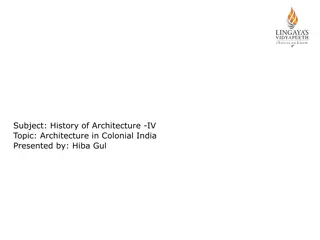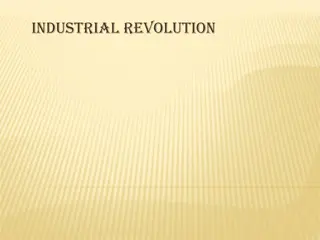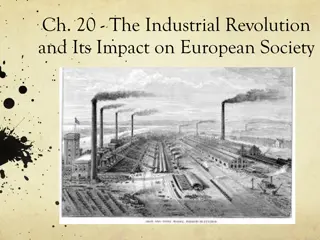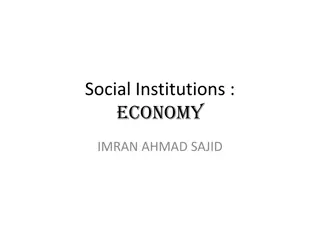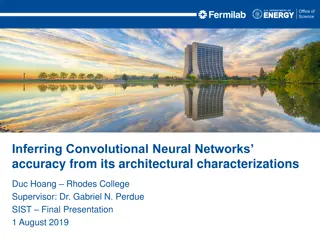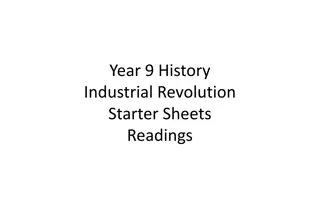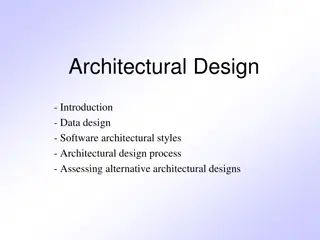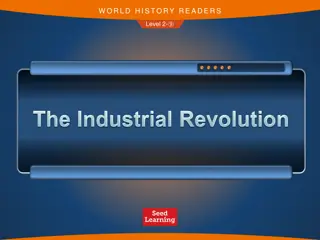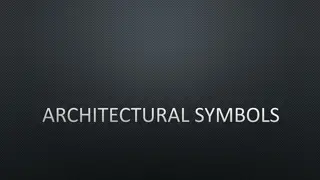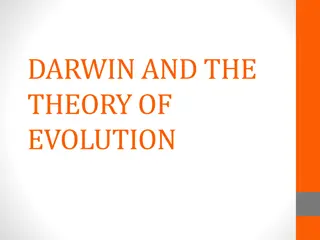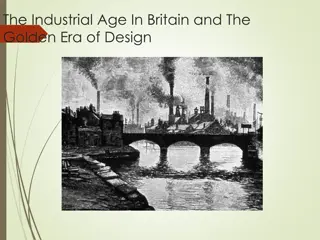Exploring Architectural Evolution: From Theory to Industrial Revolution
Exploring the evolution of architecture from theoretical foundations to the impact of the Industrial Revolution. Delve into changes in materials, energy sources, machines, transportation, and communication that revolutionized the industry. Discover the aesthetic ideals of Picturesque in architecture and the iconic Crystal Palace that showcased technological advancements.
Download Presentation

Please find below an Image/Link to download the presentation.
The content on the website is provided AS IS for your information and personal use only. It may not be sold, licensed, or shared on other websites without obtaining consent from the author. Download presentation by click this link. If you encounter any issues during the download, it is possible that the publisher has removed the file from their server.
E N D
Presentation Transcript
Theory of Architecture Fourth Stage Architecture Engineering Department
The Industrial Revolutionwas the transition to new manufacturing processes in the period from about 1760 to 1840. This transition included going fromhand production methods tomachines, iron productionprocesses, the increasing use of steam power, the development ofmachine toolsand the rise of the factory system. This process began in Britain in the 18th century and from there spread to other parts of the world. The main features involved in the Industrial Revolution were technological, socioeconomic, and cultural. Industrial Revolution
The technologicalchanges The technological changes included the following: (1) the use of new basic materials, chiefly iron andsteel. (2) the use of new energy sources, such as coal, the steam engine, electricity, petroleum, and the internal-combustion engine (3) the invention of new machines, that permitted increased production. (4) important developments in transportation andcommunication, including, automobile, airplane, telegraph, andradio. (5) the increasing application of science to industry.
Picturesque in Architecture Picturesque is an aesthetic ideal introduced into English cultural debate in 1782 byWilliam Gilpin . Relative Chiefly to Picturesque Beauty. It appeared in architecture with the writings of the English art critic and theorist John Ruskin, (The Seven Lamps of Architecture) , in 1849. The 'lamps' of the title are Ruskin's principles of architecture. These writings are considered as the contemporary thinking behind theGothic Revival. That was in practice. Ruskin s book helped to capture and summarise the thoughts of the movement.
Ruskins nine pencil drawings illustrate the principles in the Romanesqueand Gothicexamples
The Crystal Palace was a cast- iron and plate-glass structure built in Hyde Park, London, to house theGreat Exhibition of 1851. exhibition spaces display examples of technology developed in the Industrial Revolution, and world civilization Designed byJoseph Paxton an architect and gardener It was destroyed by fire in 1936. The Crystal Palace
The Crystal Palace Interior
TheEiffel Tower It is named after the engineerGustave Eiffel, whose company designed and built the tower. Constructed from 1887 1889 as the entrance to the 1889 World's Fair. it was criticized by some of France's leading artists and intellectuals for its design, but it has become a global cultural icon of France and one of the most recognisable structures in the world The tower is 324 metres
TheEiffel Tower Before Eiffel tower, architects tried to repeat historic stone structures. the Eiffel Tower changed completely the way they were using the new material (steel). The structure, its appearance is completely new and modern, without particular function. Eiffel installed a meteorology laboratory on the third floor of the tower to save it from extinction. In 1910, the city of Paris renewed Eiffel's tower structure as a wireless telegraph transmitter. The tower is still contains more than 120 antennas, broadcasting both radio and television signals throughout the capital city and beyond.
